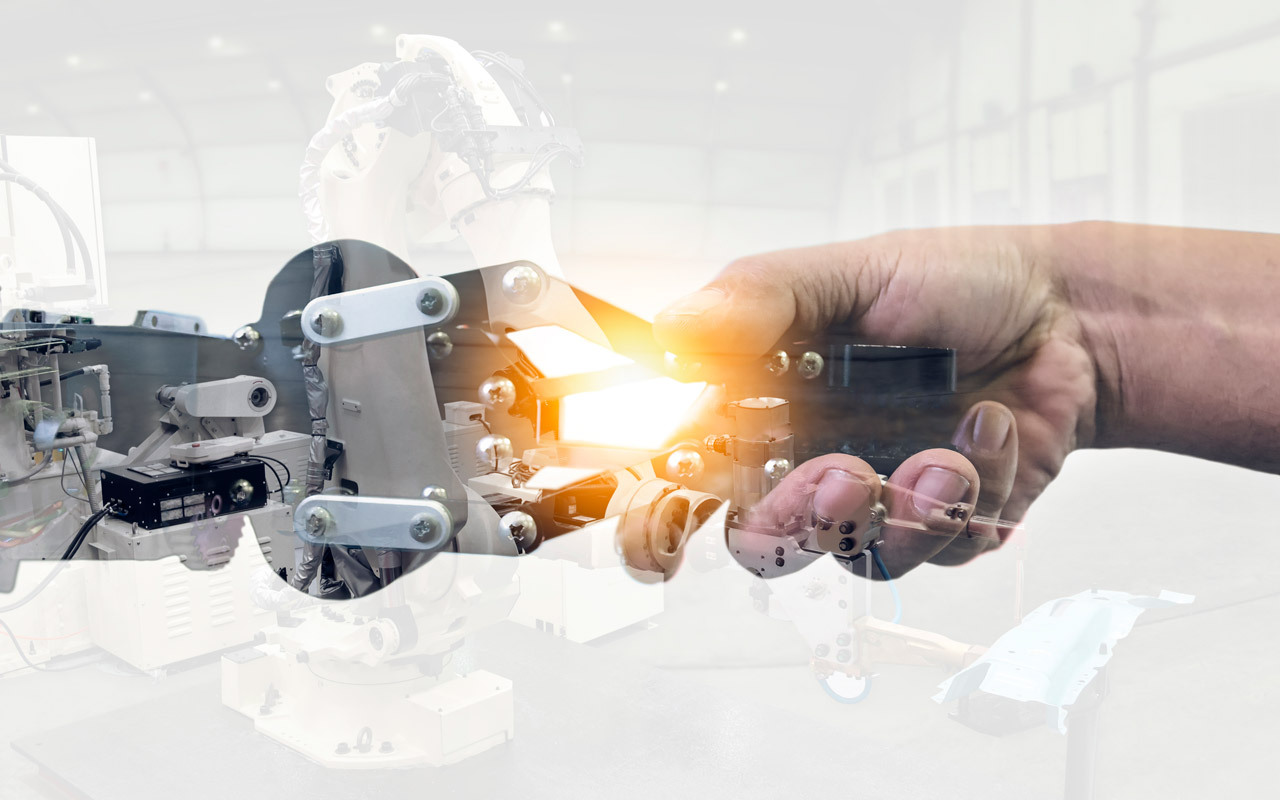19/10/2022
Not-To-Dos as a hint: These are the decisive factors for the digitization of your production

- Start your digitalization journey!
- The Not-To-Dos of a Digital Transformation
- Not-To Do: Relying exclusively on own experience and competencies
- Not-To-Do: Being reluctant to embrace innovations
- Not-To-Do: Planning without foresight
- Not-To-Do: Shying away from course change because of time investment
- Not-To-Do: Focusing production on workpiece
- Not-To-Do: Viewing digitalization as a project with a starting and ending point
- Conclusion
So-called "Not-To-Dos" help to use impulses for a digital transformation for one's own company. In the following, you will read about certain behaviors that should be avoided, and you will learn how to approach the topic of digitalization instead.
Start your digitalization journey!
Unfortunately, there is no "Ready - set - go!" for digital transformation. Expectations and needs are too different as to how digitalization can move a company forward. Tips on how digitization can be launched for companies are particularly important for taking the initiative, for example for launching pilot projects or for finding a team to implement these projects. Meanwhile, digital transformation can be so simple because the journey is the reward. It is a matter of finding acceptance within the company and achieving initial (small) successes. You have to give changes room, because they come on their own anyway. And just waiting to see what others do or what others have done is pure stagnation - without any change. Thinking about how and in which areas to start digitalization reasonably is the first step that needs to be taken. A key factor is the creation of a roadmap that suits your own company, a digitalization strategy that helps you to implement the topic in your own company at the first appropriate places.
The Not-To-Dos of a Digital Transformation
Whether for management, engineering, or production: one approach to digitalization can be so-called not-to-dos – i.e., the definition of things that one does not want to do and avoid during digitalization in one's own company. This can quickly generate an "aha" effect. Alone, in a team, or with a supervisor, defining a ban helps you to reflect on your own actions and to decide what needs to be changed. It is like an appeal to get out of one's own comfort zone and finally weigh up whether certain things should be considered to counteract this Not-To-Do in the company. In the following, some not-to-dos are presented, and conducts derived from them which should be followed instead in order to get a successful digital transformation off the ground.
Not-To Do: Relying exclusively on own experience and competencies
You have to take digitalization into your own hands, taking into account the view from outside and creating a lobby for it internally. It is helpful to use appropriate networks. First advice, set internal impulses and, for example, define an actual and a target status for the mostly mechanical machinery, which digital tools can be used for a machining center. Space and acceptance must be created for external opinions and expertise because there is sufficient expertise, especially from digitally affine machine manufacturers.
Not-To-Do: Being reluctant to embrace innovations
How do you accelerate innovation in a company? This tightrope walk between classic core business, which secures sales, and the change to secure the future of digitalization with innovative products and systems requires willpower, patience and support. Here - for example in the implementation of simulation and virtual commissioning - it helps to have the courage to break new ground and to promote openness to technology. In particular, engineering is addressed here, because engineers need new processes in value creation.
Not-To-Do: Planning without foresight
Here, holistic and system-oriented strategies must be pursued, which, for example, promote system and software engineering throughout the entire company. Anchoring modularity and flexibility already in the planning stage requires long-term goals in the change process that act as a pacesetter. Questioning one's own business model and adapting it to the fast-moving demands of the market is also part of foresight.
Not-To-Do: Shying away from course change because of time investment
Digitalization is a long process that – as described earlier – first has to be started and then nurtured. Through this change of course, one benefits in particular from creativity and flexibility, which reorganize the corporate structures. Agile project and product management methods, such as Scrum, shape digitalization, reducing time and cost expenditure. This is done in small and iterative-incremental steps, while the final state is usually not even determined yet. In this way, the "digitalization" project grows organically. These changes must first become established, and processes must be formed. That is why all employees are asked to participate in them in their everyday lives as well. Training systems and webinars are effective ways of establishing new educational standards, and in the end, everyone benefits from them.
Not-To-Do: Focusing production on workpiece
With increasing digitalization, company and product boundaries are becoming blurred. Therefore, production must be thought of holistically and across company and product boundaries. Digital manufacturing with Industry 4.0 and the term Smart Factory extend across the entire supply chain and do not spare any departments in the company. It is therefore advisable – whether in a medium-sized company or in a corporate group – to consider digitalization at all levels. Whether in purchasing via the platform economy, via virtual trade shows in marketing or via logistics tools with digital serial number tracking – there are various approaches to positioning digitalization in the company.
Not-To-Do: Viewing digitalization as a project with a starting and ending point
Digitalization is not a project that will be completed at some point. Rather, it is a dynamic process of change that will last as long as there is technological progress. And digitalization is considered the fourth industrial revolution, which has just begun and still has a lot of potential in Germany. Comparisons with China and the U.S. should animate where the paths can continue to go. With regard to the continuity of digitalization, digital projects should be viewed more as digital products that are constantly being further developed with responsible teams. The service landscape around remote maintenance with apps is a fitting impulse here, for example. The key here, as with almost all the not-to-dos mentioned, is to promote the willingness of the workforce to develop on an ongoing basis and to make innovations and further development visible.
Conclusion
The not-to-dos of digitalization presented in this article show which behaviors are to be avoided in the course of the digital transformation of one's own company and are important pathfinders for taking the right direction. It is important to understand that digitalization is an organically growing process that takes time and whose goal cannot be precisely defined. In any case, it is important to prevent the worst case scenario - sit back and wait - and to be supportive of change. Deriving an appeal from the not-to-dos presented here, generating self-reflection and drawing conclusions on how and where to start the Digital Transformation on one's own is a clear step-by-step concept that will lead to success in the long term. Initial conclusions, for example, could be to gradually establish IoT and Industry 4.0 in various areas of the company. Because one thing is clear: Data has already become one of the most important raw materials in our industry. Digitalization means the processing and profitable use of this raw material. Those who fail to use their data treasures will lag behind the companies that have recognized this potential already. The most important Not-To-Do that needs to be changed is therefore not to start.


